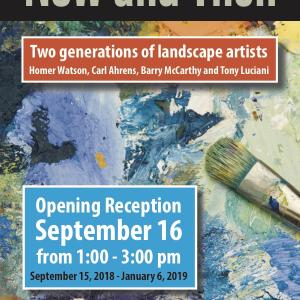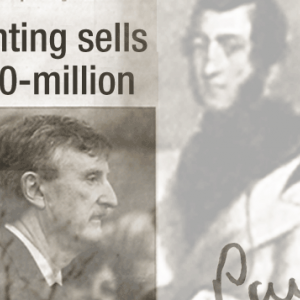English born and Winnipeg based, Walter J. Phillips (1884 – 1963) first encountered the Canadian Rockies in 1926. Inspired by their grandeur, he returned west to the mountains as often as he was able over the next 15 years.
In 1940 Phillips was invited to join the faculty of the Banff Summer School of Fine Arts (now the Banff Centre for Arts and Creativity) where he taught nearly every summer for twenty years. In 1941, with five of their six children grown, Walter and his wife Gladys moved from Winnipeg to Calgary where he had accepted a teaching position at the Provincial Institute of Technology (the art department of which is now the Alberta University of the Arts). The couple finally moved to Banff in 1943 where they would live beneath the shadow of Mount Rundle—his "bread and butter" mountain—until 1960.
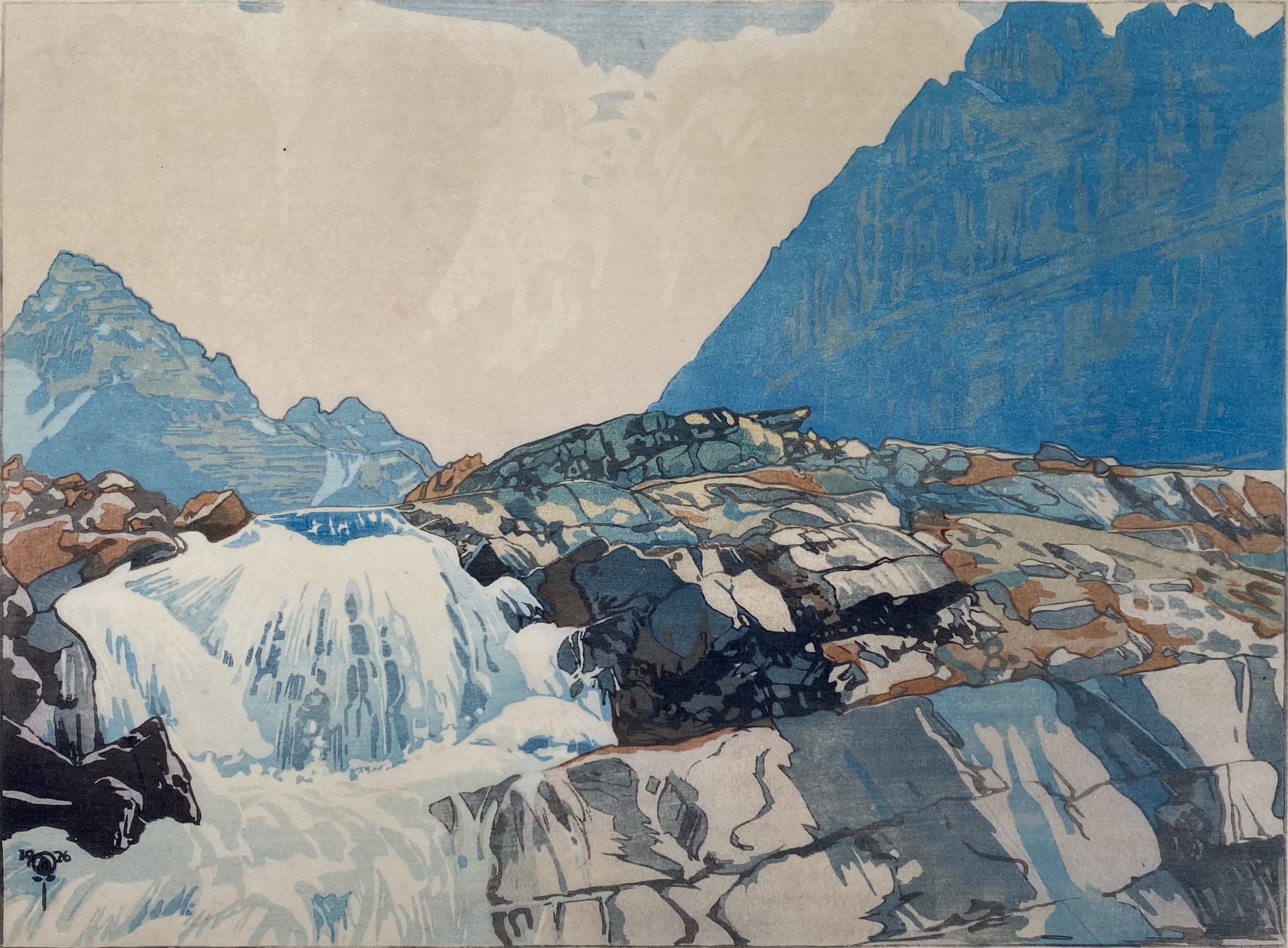
Mountain Torrent, 1926
Colour Woodcut on Paper
8.7" x 12"
Mountain Torrent shows a view of Victoria Falls, along the Lawrence Grassi-made trail from Lake O'Hara up to Lake Oesa.
 This is from a sketch made during a most interesting trip to the region around Lake O'Hara in the Canadian Rockies. Our camp was on the shore where a stream enters the lake, a tumbling noisy cataract whose source is the glacier at Opabin Pass. We emerged daily from our shut-in situation by climbing to an open plateau across which both we and the stream meandered. This proved to be a magnificent sketching-ground of meadows, lakes and glacial ice. Here were visible all the scenic changes that followed the glacial age. Sketching alone on that plateau, the world of men seemed very far away. There were no sounds but the tinkle of water, the thunder of gigantic boulders released from the heights as they bounded down the slopes, and the shrill and startling whistle of the marmot. Anybody could paint up there. The beauty of nature is thrust upon you and there are no disturbances to take your mind away; no pestiferous insects for example, only the boulders and, if one of these seriously disturbed you, you would never know it. The boulders, distributed restfully on the gentle slopes in the print, doubtless were once part of the heights that tower above them. They did not fall recently and may have been carried by some glacier that has receded since. But the boulder I sat on when I made the sketch, was divorced quite recently from the mountain. Other separations were in active progress as I sat there.
This is from a sketch made during a most interesting trip to the region around Lake O'Hara in the Canadian Rockies. Our camp was on the shore where a stream enters the lake, a tumbling noisy cataract whose source is the glacier at Opabin Pass. We emerged daily from our shut-in situation by climbing to an open plateau across which both we and the stream meandered. This proved to be a magnificent sketching-ground of meadows, lakes and glacial ice. Here were visible all the scenic changes that followed the glacial age. Sketching alone on that plateau, the world of men seemed very far away. There were no sounds but the tinkle of water, the thunder of gigantic boulders released from the heights as they bounded down the slopes, and the shrill and startling whistle of the marmot. Anybody could paint up there. The beauty of nature is thrust upon you and there are no disturbances to take your mind away; no pestiferous insects for example, only the boulders and, if one of these seriously disturbed you, you would never know it. The boulders, distributed restfully on the gentle slopes in the print, doubtless were once part of the heights that tower above them. They did not fall recently and may have been carried by some glacier that has receded since. But the boulder I sat on when I made the sketch, was divorced quite recently from the mountain. Other separations were in active progress as I sat there.
—Walter J. Phillips
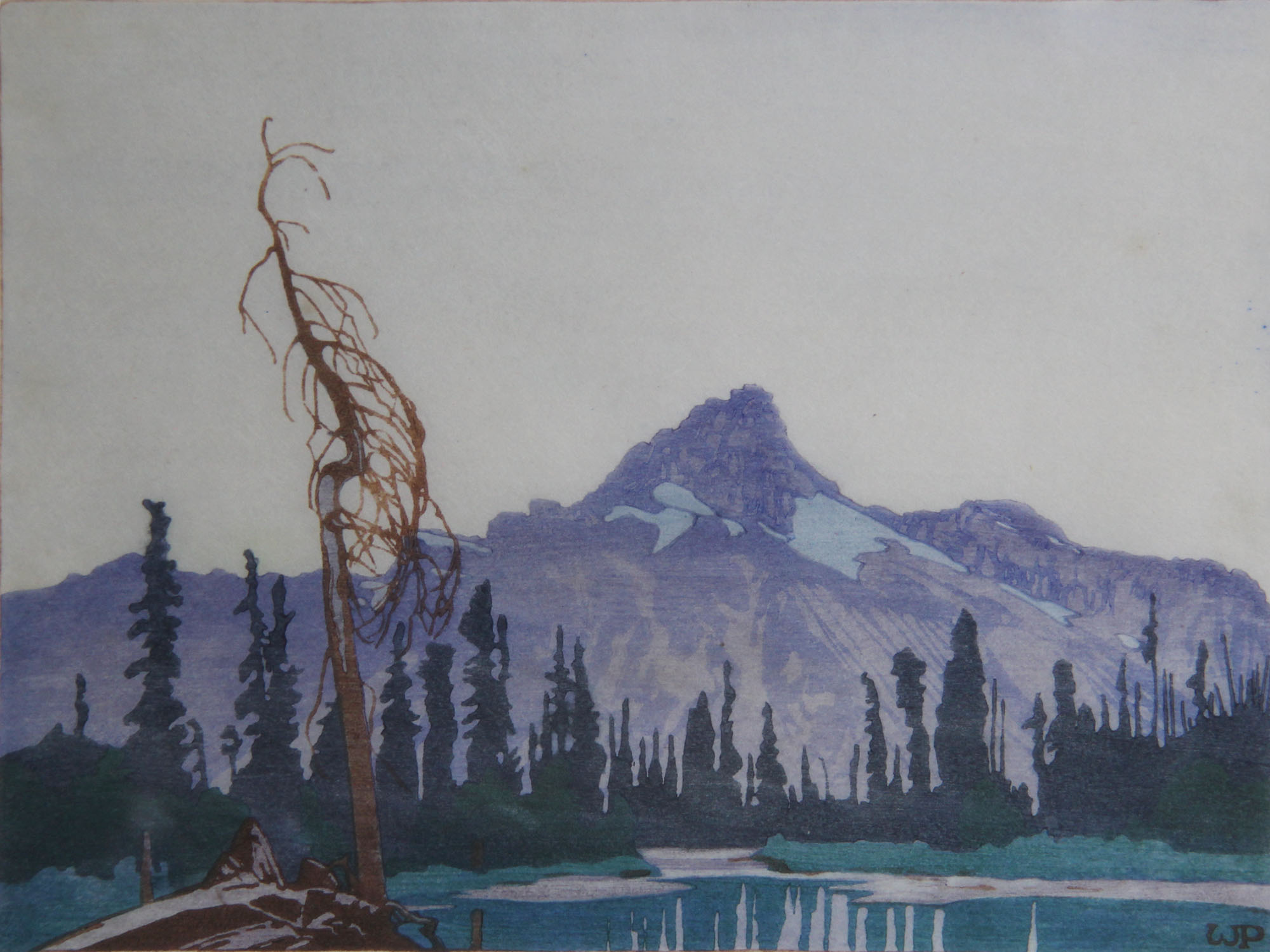
Mount Cathedral from Lake O'Hara, British Columbia, 1927
Colour Woodcut on Goyu Paper
6.4" x 8.9"
Visual thrills are dependent on one's own receptivity as well as on their rarity or sheer beauty, and the sketcher often finds himself at a loss on a colourless day, and paints subjects to which his reaction is more academic than emotional. A good subject often as not finds him unprepared. I saw the towering blue mass of Cathedral Mountain against a citrine sky through which the sun had lately passed, from the stoop of the C.P.R. chalet at dinner-time. My paints were a mile away. The effect was momentary. The colour quickly lost its purity. It was the most memorable event during a three week's stay in the vicinity.
—Walter J. Phillips, Ten Canadian Colour Woodcuts, 1927
 Mount Rundle is my bread and butter mountain. I never tire of painting it, for it is never the same. In deep shadow in the morning, it borrows a warm glow from the setting sun at the end of the day. Its colour runs the gamut from orange to cold blue-grey, with overtones of violet and intervals of green.
Mount Rundle is my bread and butter mountain. I never tire of painting it, for it is never the same. In deep shadow in the morning, it borrows a warm glow from the setting sun at the end of the day. Its colour runs the gamut from orange to cold blue-grey, with overtones of violet and intervals of green.
—Walter J. Phillips
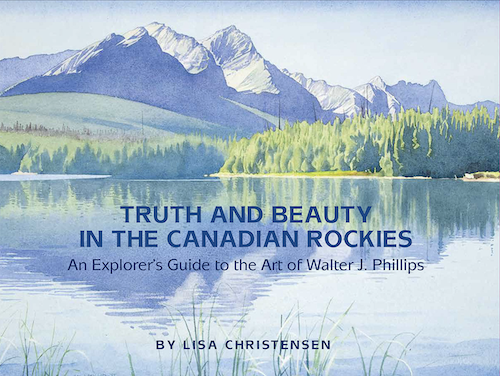
To explore more of Walter J. Phillips's Rocky Mountain imagery, purchase a copy of Lisa Christensen's Truth and Beauty in the Canadian Rockies: An Explorer's Guide to the Art of Walter J. Phillips.
Fourth in the series of highly-acclaimed and award-winning books describing trail access to the actual spots where Canadian artists have sat to paint. Truth and Beauty in the Canadian Rockies explores the work of printmaker and watercolourist Walter J. Phillips in and around the Town of Canmore as well as magnificent locations in Banff, Jasper, and Yoho National Parks. Sixty seven hikes are illustrated with his most iconic mountain works, and described with trail information and quotes from the artist as well as Christensen's evocative and lyrical words.


